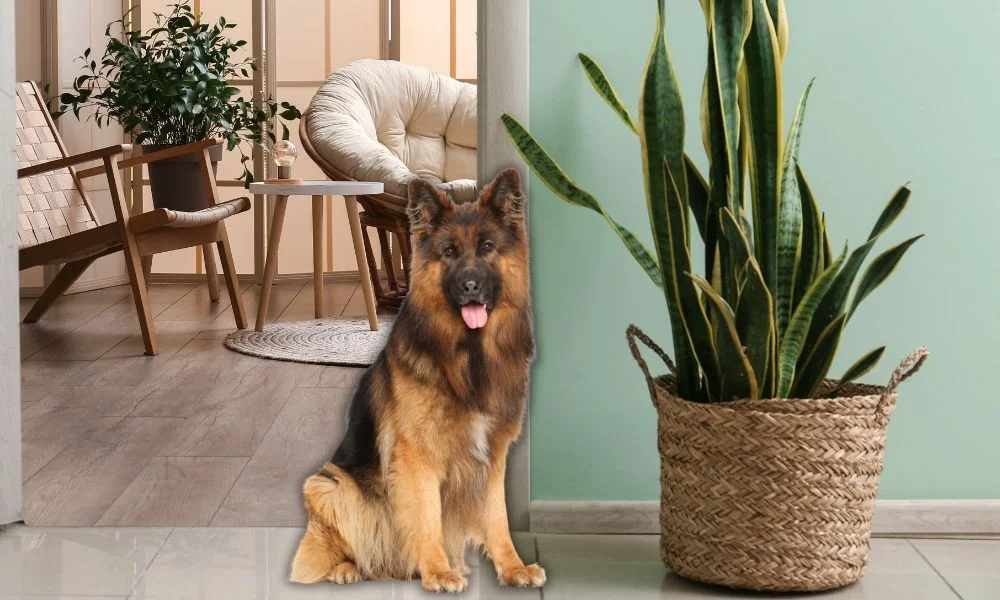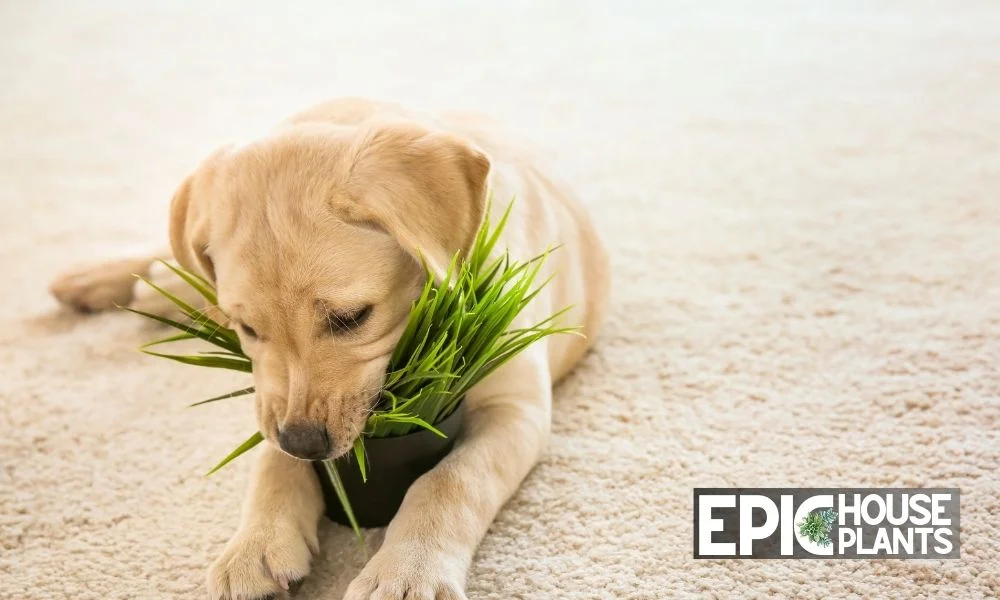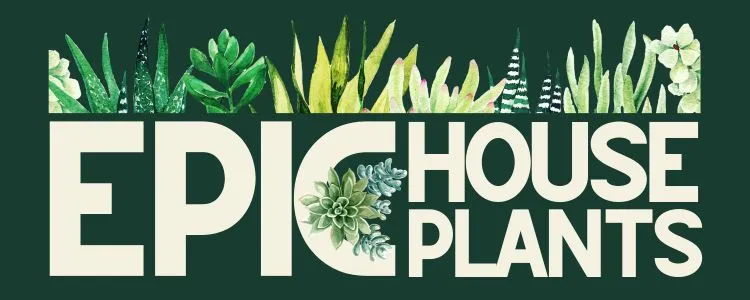Having a pet dog and being a plant enthusiast may seem like an idyllic lifestyle combination, but there is a hidden hazard that many dog owners are not aware of.
Some plants, while beautiful and aesthetically pleasing, can pose a risk to your furry friend, and one of them is the Snake Plant.
This article will answer the question, “Are snake plants toxic to dogs?“, and delve deeper into this topic, breaking down everything you need to know about the toxicity of snake plants to dogs, symptoms of poisoning, and how to treat your dog should they ingest part of a snake plant.

Understanding the Toxicity of Snake Plants to Dogs
To better understand why snake plants are toxic to dogs, it is essential to explore the toxicity aspect in detail.
What Makes Snake Plants Toxic?
Snake plants contain a toxin that can affect your dog called saponins. Saponins are toxic chemicals that protect plants from insect, fungal, and bacterial pathogens.
Every part of the snake plants is toxic, including foliage, roots, and fruits, but the highest concentration of saponin is found in the skin of the leaves.
Severity of Snake Plant Toxicity
While the toxin sounds ominous, the severity of the toxicity often depends on the amount ingested. Ingesting small amounts usually results in less severe symptoms, while ingesting large amounts may be more serious.
Snake plants are considered mildly to moderately toxic to dogs, and it’s important to monitor your dog if you suspect they’ve ingested part of the plant. Most dogs will recover from snake plant poisoning within 24-48 hours.
💡Also Read: If you’re a cat owner as well, you might also be interested in reading our article on Are Snake Plants Toxic to Cats?, as the toxicity of snake plants is not limited to dogs.
How to Treat Your Dog for Snake Plant Poisoning
In the unfortunate event that your dog chews on a snake plant, it is crucial to know how to provide immediate treatment. Here are a few steps to follow:
- Remove the plant material from your dog’s fur and skin. This will prevent further ingestion of the toxic parts of the plant.
- Get your dogs to a room with proper air ventilation and lighting. This will help your dog breathe easier and calm down.
- Rinse your dog’s mouth using clean water. This will help wash away any remaining plant particles or sap.
- Wash the paws and skin to clean off the toxins with warm water and a small amount of non-irritating dish soap. Be gentle as the skin may already be irritated by the plant’s toxins.
- Call the vet immediately if the symptoms persist even after giving first aid. If the symptoms continue or your dog ingests a significant amount of the plant, it’s critical to seek professional medical assistance immediately.
In case of an emergency, the ASPCA Animal Poison Control Center (APCC) can provide immediate, expert assistance.
If you suspect your pet has ingested a potentially poisonous substance, call (888) 426-4435. Remember, a consultation fee may apply
Symptoms of Snake Plant Poisoning in Dogs
Identifying the signs of snake plant poisoning in dogs can be the key to timely and effective treatment. Here is a detailed table highlighting the symptoms of Snake Plant Poisoning in Dogs.
| Symptoms | Details |
|---|---|
| Drooling | Excessive drooling beyond the usual dog slobber could be a sign that your dog has ingested part of a snake plant. |
| Nausea | Restlessness or excessive lip licking could indicate snake plant poisoning. Nausea in dogs might signal that they’ve ingested something toxic. |
| Vomiting | Vomiting is a common symptom suggesting your dog has ingested a toxic substance like a snake plant. If your dog has ingested part of this plant and is vomiting, it’s essential to get it checked by a vet. |
| Diarrhea | Loose stools or diarrhea can result from snake plant toxicity. If your dog has unusual bathroom habits after being around a snake plant, it may have ingested part of it. |
| Ruptured Red Blood Cells | Snake plant poisoning can lead to severe symptoms due to ruptured red blood cells. This can cause additional complications in dogs and would require immediate veterinary attention. |
| Swollen Mouth and Immediate Surrounding Area | The sap of snake plants is a well-known irritant to any exposed skin it comes into contact with. If your dog has chewed or licked a snake plant, parts of the mouth, nose, and tongue that touched the sap are likely going to be swollen, red and suffer oral irritation. |
Author Note:
Please note that these are potential symptoms and might not occur in every case of snake plant ingestion. Any changes in behavior or physical symptoms should prompt immediate consultation with a veterinarian.
How to Keep Your Dog Safe Around Houseplants: A Detailed Guide

Certain types of houseplants, including the popular snake plant, can cause distress to your dogs when ingested.
But don’t worry, we’ve got you covered with strategies on how to keep your dog safe, including alternative houseplants that are non-toxic to dogs.
Keep the Plant Out of Reach
The simplest way to keep your dog safe is by making sure the plant is out of their reach. Place your snake plants on higher shelves or in hanging baskets where your dog can’t get to them even with a swift jump.
Train Your Dog
Train your dog to avoid specific areas where you keep your plants. You can use commands, treats, or other training techniques to make sure your dog understands the boundaries.
Spray a Pet Repellent Scent on the Plant
Natural dog repellents like apple cider vinegar or orange zest can be used on the snake plant to keep your dog away from them. However, be sure to check if these substances are safe for the plant as well.
Clean Up Any Fallen Parts
Make sure to promptly remove any fallen leaves or parts of the plant. Your pet may be tempted to chew on these, leading to potential issues.
💡Also Read: If you’re looking for more tips on plant care, especially if you have a snake plant, you might find our blog post on Repotting Snake Plant Like a Pro: A Comprehensive Guide useful!
Other House Plants That Are Toxic To Dogs
While we’re on the topic of potentially harmful plants for dogs, it’s essential to know that snake plants aren’t the only ones to look out for.There are several other common houseplants that could be toxic to your pets. Some of these include:
Dieffenbachia
Dieffenbachia plants, also known as dumb cane, are popular houseplants appreciated for their attractive foliage and their tolerance for shade. However, they contain insoluble calcium oxalate crystals, which can cause severe irritation if ingested by your pet.
The symptoms of Dieffenbachia toxicity include excessive drooling, licking, avoidance of food and water, and mouth ulcers. While the toxicity is typically not life-threatening, it can cause discomfort and distress to your dog. It’s important to keep these plants out of reach of your pets.
Philodendrons
Philodendrons are common indoor plants known for their lush, tropical foliage. However, they contain a toxic substance called calcium oxalate, which can cause symptoms like drooling, pawing at the mouth, oral pain, and swelling if your dog ingests them.
In severe cases, ingestion can lead to difficulty swallowing, vomiting, and even respiratory distress.
Sago Palm
Sago palms are not true palms but are cycads, ancient plants that predate dinosaurs. They are prized for their unique, palm-like appearance.
However, all parts of the Sago Palm are highly toxic to dogs, especially the seeds. Ingesting even a small amount can cause vomiting, diarrhea, depression, seizures, and liver failure.
Aloe Vera
Aloe Vera is a common houseplant known for its succulent leaves and health benefits for humans. However, for dogs, ingestion of the plant can cause symptoms such as vomiting, diarrhea, loss of appetite, change in urine color, and rarely, tremors.
Photos (Pothos)
Pothos, also known as devil’s ivy, is a popular and easy-to-care-for indoor plant. It’s characterized by its heart-shaped leaves and growing versatility. However, it contains insoluble calcium oxalates, making it toxic to dogs if ingested. Symptoms can include oral irritation, excessive drooling, vomiting, and difficulty swallowing.
Tulips
Tulips are beautiful spring-blooming flowers often used in garden landscapes and as potted plants. The bulb of the tulip is the most toxic part and can cause drooling, loss of appetite, depression of the central nervous system, convulsions, and cardiac abnormalities in dogs if ingested.
Author Note:
Always remember that it’s best to keep these plants out of reach of your pets to prevent any accidental ingestion.
Dog-Safe Alternatives to Snake Plant

If you’re looking to make your home greener while ensuring the safety of your pet, consider these dog-safe alternatives to the snake plant:
Spider Plant
The Spider Plant (Chlorophytum comosum) is a popular houseplant that is known for its long, arching leaves that are green and white. This plant is completely safe for pets and also known for its air-purifying qualities. It’s very easy to care for, making it a great choice for novice plant owners.
Prayer Plant
The Prayer Plant (Maranta leuconeura) is a low-growing plant known for its strikingly patterned leaves. During the day, the leaves spread out to catch the light, and at night, they fold up like they’re in prayer (hence the name). This plant is non-toxic to dogs and makes a beautiful addition to your home decor.
Boston Fern
Boston Ferns (Nephrolepis exaltata) are attractive houseplants that are non-toxic to dogs. They have delicate, feather-like fronds and are often hung in baskets or set on pedestals. They prefer a cool, humid environment and indirect light, making them perfect for bathrooms or other rooms with less natural light.
Ponytail Palm
Despite its name, the Ponytail Palm (Beaucarnea recurvata) is not a true palm but is actually a succulent. It has a bulbous trunk, which it uses to store water, and long, hair-like leaves that cascade down from the top of the plant.
Ponytail Palms are safe for dogs and are drought-tolerant, making them a great choice for those who tend to forget to water their plants.
Zebra Calathea
Zebra Calathea (Calathea zebrina) is a stunning plant that gets its name from its large, patterned leaves that resemble zebra stripes. It’s a tropical plant that loves humidity and indirect light. Like other plants on this list, the Zebra Calathea is safe for dogs to be around.
These dog-safe plants not only make your home look more vibrant and inviting, but they also provide peace of mind knowing that your furry friends can safely coexist with them.
💡Also Read: Interested in learning more about snake plants? Check out our blog post on The Rare Bloom: Do Snake Plants Flower?
Author Note:
Safety comes first when it comes to our pets. By choosing the right plants and taking necessary precautions, you can ensure your dog’s safety while enjoying the beauty of indoor gardening.
Author

Pudji Haryanto
Pudji Haryanto is a writer and urban farmer with a passion for cultivating plants. He has over 15 years of experience in agriculture and currently manages a 65,000 square foot rice-field and yard filled with various plants, including vegetables, spices, flowers, and garden plants.
